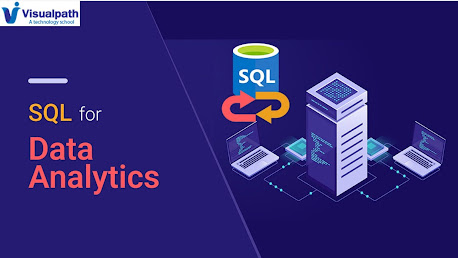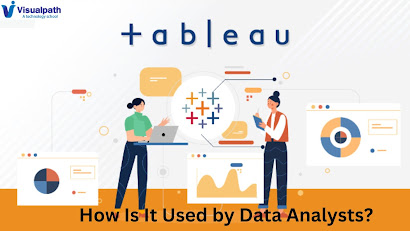SQL for Data Analytics: Tutorial
Introduction:
Data Analysis While SQL is often associated with
coding, there are ways to leverage its capabilities without diving into complex
programming. In this article, we'll explore how you can harness the power of
SQL for data analysis without writing a single line of code. - Data
Analytics Online Training
SQL's Role in Data
Analysis:
SQL is a standard language for managing
and manipulating relational databases. Its simplicity and effectiveness make it
an indispensable tool for data professionals across various industries.
Typically, SQL queries are used to retrieve, update, or manipulate data stored
in databases.
However,
SQL's utility extends beyond traditional database management tasks. With the
right approach, it can serve as a robust platform for conducting complex data
analyses, ranging from simple aggregations to advanced statistical operations.
- Data Analytics Course in
Hyderabad
Utilizing SQL-Based
Analytical Tools:
One of the
most accessible ways to perform data analysis with SQL is through the use of
SQL-based analytical
tools. These tools provide graphical user interfaces (GUIs) that allow
users to construct SQL queries visually, without needing to write code
manually.
Popular
examples of SQL-based analytical tools include Microsoft Power BI, Tableau, and
Mode Analytics. These platforms offer intuitive interfaces that enable users to
drag and drop elements to build queries, create visualizations, and explore
data interactively.
By
leveraging these tools, users can harness the full power of SQL for data
analysis tasks without the need for coding expertise. This democratizes access
to data insights and empowers non-technical users to derive value from complex
datasets. - Data Analytics Online
Training Institute
Harnessing SQL for
Data Exploration and Visualization:
SQL's
querying capabilities make it an ideal tool for data exploration and
visualization. With SQL, users can efficiently filter, aggregate, and
manipulate datasets to uncover patterns and trends. By combining SQL queries
with visualization libraries such as Matplotlib
or Plotly, analysts can create insightful charts and graphs that communicate
findings effectively.
For example,
analysts can use SQL to calculate key performance indicators (KPIs) such as
revenue, customer acquisition cost, or churn rate. By visualizing these metrics
over time or across different segments, organizations can gain valuable
insights into their business performance and make informed decisions. - Data
Analysis Online Training Course
Furthermore,
SQL's support for joins and subqueries enables analysts to combine data from
multiple sources seamlessly. Whether it's integrating sales data with marketing
campaigns or correlating customer demographics with purchasing behavior, SQL
provides the flexibility to conduct sophisticated analyses with ease.
Conclusion:
In
conclusion, SQL is a versatile tool that holds tremendous potential for data
analysis, even without writing code. By leveraging SQL-based analytical tools
and techniques, organizations can unlock valuable insights from their data and
drive informed decision-making.
Visualpath is the Leading and Best Institute for learning Data Analytics
Online in Ameerpet, Hyderabad. We provide Data Analytics Online Training Course, and you will get the best course at an affordable cost.
Attend Free Demo
Call on - +91-9989971070.
Visit : https://www.visualpath.in/data-analytics-online-training.html
Blog : https://dataanalyticsonlinecourse.blogspot.com




Comments
Post a Comment